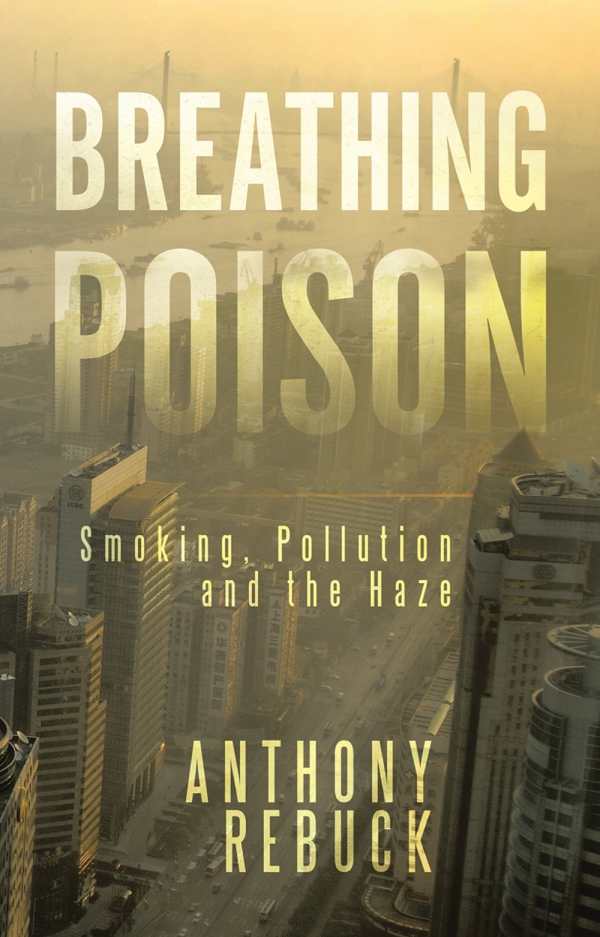Breathing Poison
Smoking, Pollution and the Haze
This is a concise clarion call to action against the rise of COPD.
Many readers will be familiar with images of residents of Beijing or Tokyo wearing face masks as they walk outside, but few have heard the story of how the combined effects of air pollution, haze from slash-and-burn agriculture and illegal wildfires, and heavy tobacco use have created an Asian epidemic of Chronic Obstructive Pulmonary Disease (COPD). In his new book, Breathing Poison: Smoking, Pollution and the Haze, respiratory medical specialist Dr. Anthony Rebuck describes the “gathering storm” created by this toxic troika throughout the world’s most populous continent.
Since 1999, the Canadian native has been a Singapore resident, where he manages various clinical research projects. He is involved with finding ways to overcome rising rates of disability and premature death from COPD. Though the book is probably of most interest to those in the medical and public health fields, Rebuck breaks down various aspects of the disease into chapters that can be readily understood by a more general audience. The text is punctuated with many illustrations and photographs to further illuminate these concepts, though some of these are not reproduced very crisply.
The author has a clear, concise prose style and chooses good analogies that effectively demonstrate the gravity of this public health crisis. While the eruption of Mount St. Helens caused acute respiratory distress due to breathing in volcanic ash, and led to some deaths at first, the impact petered out fairly rapidly after rains cleansed the air. By contrast, Rebuck explains, the finer particulates and toxic gases from cigarettes, haze, and industrial/automobile pollution have a more chronic and progressively devastating effect on the lungs, leading some folks toward emphysema and others to chronic bronchitis, the twin forms of COPD.
Rebuck is not above a little sarcasm, as when he notes that Albert Einstein, a longtime pipe smoker, “whose name is synonymous with ‘genius’, died of a ruptured aortic aneurysm at the age of 76, having undergone surgery for the same condition seven years earlier.”
The author sounds the alarm that rapid economic development, particularly in China and India, is exacerbating the COPD health crisis on a large scale. Even as some government health officials and medical professionals are making inroads in public awareness about the hazards of cigarette smoking and pollution control, these gains are overwhelmed by the pace of industrialization and private car ownership. Rebuck counters with action plans that combine many different strategies in tandem, including smoking bans, increased taxation of tobacco products and industrial pollution, enforcement of land clearing laws, media campaigns, and physician education.
While the focus of this book is the looming COPD health crisis, readers will also get a broad education on how the respiratory system functions, information about current treatment regimes, and the prospects for medical breakthroughs in the future. The gravity of the COPD epidemic, which Rebuck notes is currently the fifth leading cause of death and disability in the world, is one that is likely to zoom onto the public radar more acutely as it claims more and more victims in Asia, “where COPD is at its worst, and growing fastest.” Rebuck’s clarion call to action in fighting this preventable disease aims to help counter this trend.
Reviewed by
Rachel Jagareski
Disclosure: This article is not an endorsement, but a review. The publisher of this book provided free copies of the book and paid a small fee to have their book reviewed by a professional reviewer. Foreword Reviews and Clarion Reviews make no guarantee that the publisher will receive a positive review. Foreword Magazine, Inc. is disclosing this in accordance with the Federal Trade Commission’s 16 CFR, Part 255.

